Shooting Range: Mortar Squad
The Soviet M1938 120-millimeter mortar was the first modern 120mm mortar produced by any country in great quantity, entering production in 1939. The Red Army made significant use of its heavy caliber by treating it as an artillery piece in World War II in addition to using it as regimental high angle fire support. The Germans were impressed by the weapon and adopted it for their own use, and developed a copy—the Granatwerfer 42. Romania also produced a copy, designated Reșița Model 1942. The mortar was kept in production long after the war and sold to Soviet allies. Users have particularly liked the weapon for its uniquely-designed towing carriage, which made it easy to limber up in a single movement, using hooks on the weapon’s base-plate. It is typically deployed to support infantry units, and is the heaviest weapon that can be reasonably transported by soldiers on foot.
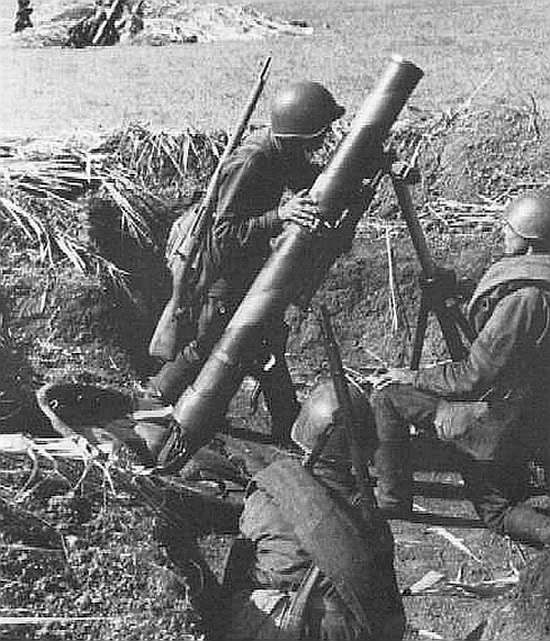
Shooting Range: Maxim Machine Gun Squad
The PM M1910 (Пулемёт Максима на станке Соколова, Pulemyot Maxima na stanke Sokolova or “Maxim’s machine gun model 1910 on Sokolov’s mount”) was a heavy machine gun used by the Imperial Russian Army during World War I and the Red Army during World War II. It was adopted in 1910 and was derived from Hiram Maxim’s Maxim gun, chambered for the standard Russian 7.62x54mmR rifle cartridge. The M1910 was mounted on a wheeled mount with a gun shield and was replaced in Soviet service by the SG-43 Goryunov, starting in 1943.
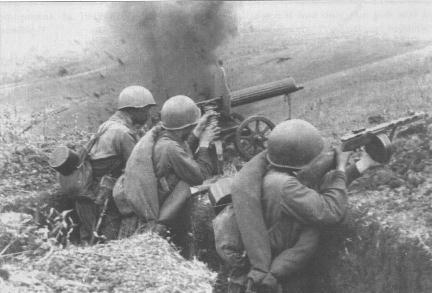
Shooting Range: 53k AT Gun
This weapon introduced in 1937 was very similar in construction to the German 37mm Pak 36 which had been produced in Russia under license since 1931. The Red Army increased the calibre to improve armour penetration and also have the capability to fire a useful high explosive round. It was fitted with the M1934 tank gun and the trunnion and trails were strengthened to cope with the additional weight. The gun was light and manouverable and was effective against German armor until mid 1942. Despite the gradual decrease in the guns effectiveness due to increasing armor protection the gun remained in production until late 1944. During the latter stages of the war the gun was increasingly used in the infantry support role firing high explosive rounds instead of its intended anti tank role. An improved version, the M1943 gun was introduced in 1943 and remained in production until the end of the war. The gun was given a new, longer barrel which increased the muzzle velocity and improved its armor penetration capability to 61mm at 500m and 51mm at 1000m. The addition of the longer barrel increased the guns weight to 625kg, slightly reducing its mobility.
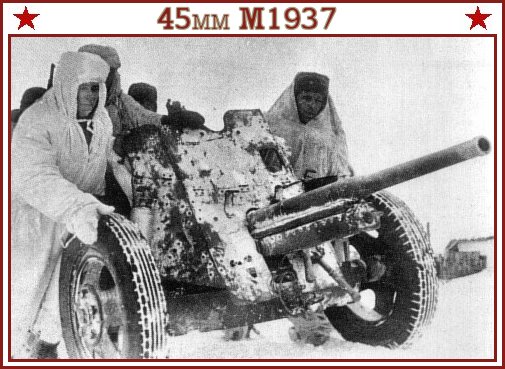
Factory: T-70M Light Tank
The T-70 was introduced in March 1942 to replace the T-60. The vehicle had an improved power plant and a redesigned turret which was again offset to the left of the hull while the power plant was placed to the left for ease of construction and maintenence. The vehicle was mounted on the same chassis as the T-60 and this caused problems with mobility. Reliability in mud or deep snow was poor and the vehicle frequently became bogged in poor ground conditions. In September 1942 the Astrov team redesigned it by placing the two engines in a row and using a conventional transmission and differential arrangement. To ease assembly, the turret was also redesigned to use flat armour plate, and it was moved to the left, with the engines to the right. The T-70M (»modified«), as it was called, was accepted by the GKO for Red Army service in March 1942.
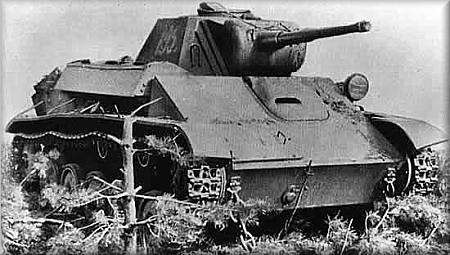
Factory: SU-76M Assault Tank
In December 1942 the SU-76 self propelled gun was introduced. It was built on the now redundant T-60 chassis. The vehicle was fitted with the 76.2mm Zis 3 gun, which was mounted in the rear of the hull and was encased in a crude armored box. The vehicle had a low silhouette, good mobility and good cross country performance. In February 1943 the vehicle began to be built on the T-70 chassis and the front of the hull was redesigned. The old single engine was replaced with a pair of engines fitted side by side. The new vehicle was designated SU-76M. The vehicle was disliked by its crews, who nicknamed it ‘Suka’ (Bitch), due to its weak armor and open top crew compartment. Difficulties in synchronising the two engines also lead to transmission failures. In October 1943 an improved version was introduced with improvements to the engine, transmission and chassis. However despite its faults it performed reasonably well in the infantry support role and remained in production throughout the war.
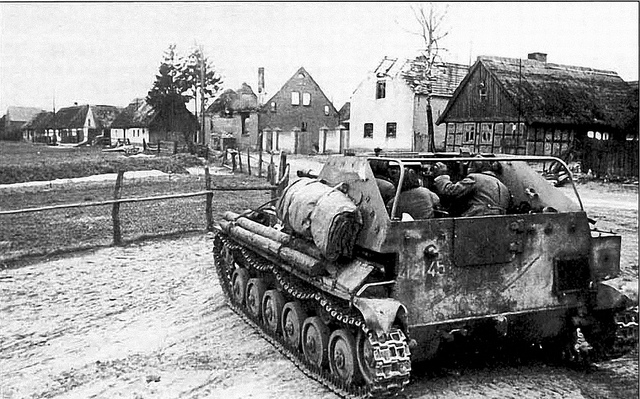
Factory: M5 Halftrack
This vehicle, introduced in December 1942 and produced by the International Harvester Company, was an adapted version of the M3 halftrack. The vehicles were introduced onto the eastern front in late 1943 and were used as artillery tractors and command vehicles in reconnaissance units of the Red Army. The vehicle tended to perform poorly on soft ground and also did not adapt well to the use of low-octane fuels experienced in Russia.
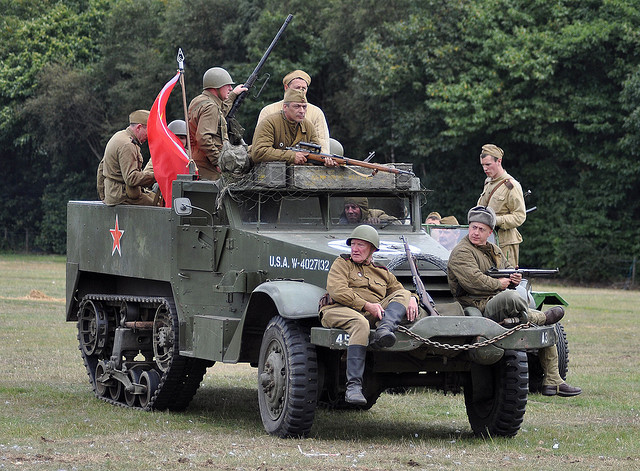
Factory: T-34 Medium Tank
Development of a new medium tank, eventually designated the T-34, began in June 1938. The vehicle was to be able to resist armour penetration from the standard AT guns of the time, the 37mm and 76.2mm. This was achieved by introducing sloping armour in order for AT rounds to glance of the tank. It was also required to have a diesel engine.
Production finally began in September 1940. The new vehicle was initially complicated and expensive to produce and soon fell behind production targets. It was originally armed with the 76mm L11 gun, but in February 1941 this was superseded by the 76mm F34 gun. Again the limit of a two-man crew in the turret led to poor combat effectiveness. The commander also had a poor field of vision. In cold weather the engines were assisted in starting by a pair of compressed air bottles. Initially, radios were only fitted in the company commander’s tank, which had a 71-TK-3 transmitter/receiver. However, by mid 1943 about 75% of all vehicles were equipped with radios. Internally the TPU-3 inter-phone system was used for communication between the commander and driver. The vehicle was also fitted with wider tracks than normal and this gave it good mobility over snowy or muddy terrain. The Red Army troops called it ‘Prinadlezhit-Chetverki’, which means 34.
In combat the T-34 initially suffered from some technical difficulties. The transmission was prone to failure, the vehicle’s treads were weak, the main and side clutches broke down, when crossing ditches the low set of the vehicle caused its nose to dig in and more worryingly, the hull armour could be penetrated at 300 to 400m by a 37mm antitank round. In addition there was a severe shortage of experienced crews for the new vehicle.
In December 1941 a new variant, the model 42, was introduced. It had a new gun cradle and a new cast turret, which was up-armoured to 52mm. It was also fitted with a new 5-speed gearbox and external fuel tanks to increase its operational range to 270 miles (430km). The overall number of parts on the vehicle was also decreased to simplify production. Again the tracks were further widened to improve mobility in harsh terrain.
In January 1943, the model 43 was fitted with a new hexagonally shaped cast turret, which was slightly larger and simpler to manufacture. It was also up-armoured to 90mm.
In August 1943 it was decided to improve the main armament to cope with the improved German tanks being introduced on the Eastern Front. This saw the introduction of the new T-34/85. It was fitted with the 85mm ZIS-53 gun. The new vehicle was introduced in March 1944. The size of the vehicle chassis was increased slightly to take an enlarged cast turret and the new gun. Its main advantage was that it could now hold a crew of three, improving operational efficiency. Armour thickness was again increased to 120mm. This increased the vehicles weight to 32 tons, leading to a decrease in range to 190 miles. Another variant of this tank was the OT-34/85. It was fitted with an AT-42 flame-thrower mounted in place of the hull mg, which could shoot a flame jet 60-100m. A further variation was the PT-3, which had a mine removal roller attached.
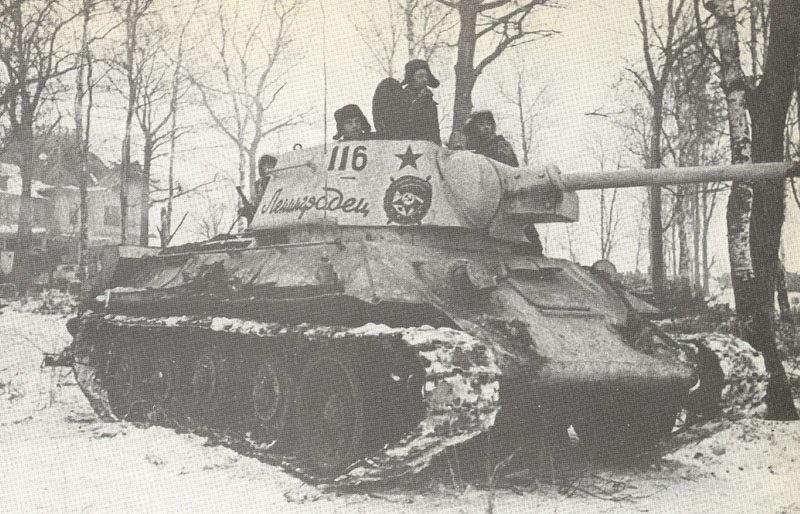
Factory: KV-1 Heavy Tank
Following the poor performance of early attempts at heavy tank construction, a requirement for a new heavy tank design was sought. Development of the new vehicle, designated the KV series began in December 1938. The new vehicle was required to be able to stand up to current A/T guns, the 37 and 76.2mm and be powered by a diesel engine.
Production of the new vehicle began in February 1939. It was fitted with compressed air tanks and reserve batteries for cold weather start up. It was also fitted with wider tracks to improve its cross-country performance. The KV’s main armament was the 76.2mm L-11 gun, installed in a large welded turret.
The KV was introduced into service in December 1939, when it saw action during the Russo-Finish war. It performed well, proving reasonably reliable, however it suffered initial problems with its transmission, gearbox and chassis. This meant that the vehicle had to be stopped to change gear. It was also difficult to steer and the driver and commander also had poor fields of view. Despite the large crew, the commander still had to double up as the gun loader.
In November 1940, the vehicle was refitted with the new, more powerful F-32 gun. It was also fitted with a new, improved 600hp power plant. The new vehicle was re-designated the KV-1. In July 1941 the F-32 gun was again replaced by the new 76.2mm Zis-5 gun, which was fitted in a new improved cast turret. In addition, 35mm bolt on plates were added to improve armour protection. This increased the vehicles weight to 47 tons. Production of the KV-1 continued until December 1943.
In February 1942, a flame throwing version, the KV-8 was also introduced. It was fitted with a smaller 45mm 20K gun to allow room for the additional fitting of the ATO-41 flame-thrower, which was installed coaxially. It carried 670 litres of oil and gave around 100 bursts of flame, with a range of about 46m.
In 1942 development began on a lighter version of the KV, the KV-1s. The vehicle was 5 tons lighter than the KV and KV-1 versions. Frontal armour was reduced to 60mm and the hull was completely redesigned. The transmission and gearbox were also replaced and the turret design was improved. Production of the KV-1s began in August 1942. The KV-1s chassis and redesigned turret were fitted with the newly developed 85mm S-31 gun. The crew was also reduced to four, due to lack of room inside the vehicle resulting from the fitting of the larger gun. The KV-1s was introduced into service in August 1942, but production was discontinued in September 1943.
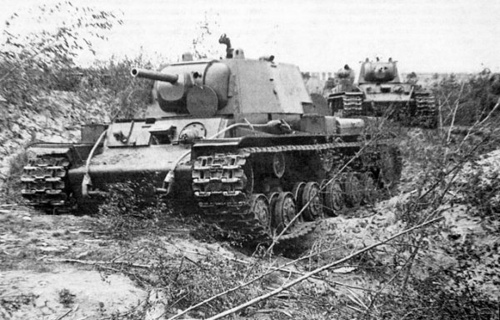
Factory: Katyusha
Katyusha multiple rocket launchers (Russian: Катю́ша) are a type of rocket artillery first built and fielded by the Soviet Union in World War II. Compared to other artillery, these multiple rocket launchers deliver a devastating amount of explosives to a target area quickly, but with lower accuracy and requiring a longer time to reload. They are fragile compared to artillery guns, but are inexpensive and easy to produce. Katyushas of World War II, the first self-propelled artillery mass-produced by the Soviet Union, were usually mounted on trucks. This mobility gave the Katyusha (and other self-propelled artillery) another advantage: being able to deliver a large blow all at once, and then move before being located and attacked with counter-battery fire. Katyusha weapons of World War II included the BM-13 launcher, light BM-8, and heavy BM-31.
Initially, concerns for secrecy kept their military designation from being known by the soldiers who operated them. They were called by code names such as Kostikov guns (after the head of the RNII – the Reaction-Engine Scientific Research Institute), and finally classed as Guards Mortars. The name BM-13 was only allowed into secret documents in 1942, and remained classified until after the war. Because they were marked with the letter K (for Voronezh Komintern Factory), Red Army troops adopted a nickname from Mikhail Isakovsky’s popular wartime song, “Katyusha”, about a girl longing for her absent beloved, who has gone away on military service. Katyusha is the Russian equivalent of Katie, an endearing diminutive form of the name Katherine: Yekaterina →Katya →Katyusha.
German troops coined the sobriquet Stalin’s organ (German: Stalinorgel), after Soviet leader Joseph Stalin for its visual resemblance to a church musical organ and alluding to the sound of the weapon’s rockets. They are known by the same name in Denmark (Danish: Stalinorgel), Finland (Finnish: Stalinin urut), France (French: Orgues de Staline), Norway (Norwegian: Stalinorgel), the Netherlands (Dutch: Stalinorgel), Hungary (Hungarian: Sztálinorgona), and in Sweden.
The heavy BM-31 launcher was also referred to as Andryusha (Андрюша, an endearing diminutive of “Andrew”). But in fact, only the Soviet press used this name. Katyusha rocket launchers were mounted on many platforms during World War II, including on trucks, artillery tractors, tanks, and armoured trains, as well as on naval and riverine vessels as assault support weapons, Soviet engineers also mounted single Katyusha rockets on lengths of railway track to serve in urban combat.
The design was relatively simple, consisting of racks of parallel rails on which rockets were mounted, with a folding frame to raise the rails to launch position. Each truck had between 14 and 48 launchers. The M-13 rocket of the BM-13 system was 180 cm (5 ft 11 in) long, 13.2 cm (5.2 in) in diameter and weighed 42 kg (93 lb).
The weapon is less accurate than conventional artillery guns, but is extremely effective in saturation bombardment, and was particularly feared by German soldiers. A battery of four BM-13 launchers could fire a salvo in 7–10 seconds that delivered 4.35 tons of high explosives over a 400,000-square-metre (4,300,000 sq ft) impact zone.; meaning it was roughly equivalent to the power of 72 gun batteries. With an efficient crew, the launchers could redeploy to a new location immediately after firing, denying the enemy the opportunity for counterbattery fire. Katyusha batteries were often massed in very large numbers to create a shock effect on enemy forces. The weapon’s disadvantage was the long time it took to reload a launcher, in contrast to conventional guns which could sustain a continuous low rate of fire.
The distinctive howling sound of the rocket launching terrified the German troops and could be used for psychological warfare. The rocket’s devastating destruction also helped to lower the morale of the German army.
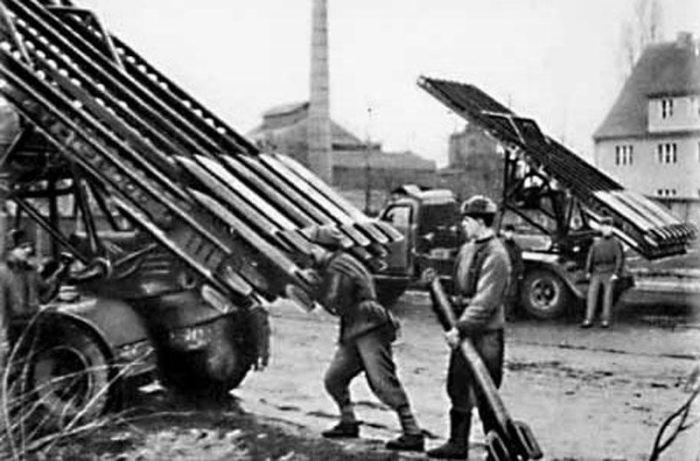










 cblanco ★
cblanco ★  보드카 중대
보드카 중대  VonManteuffel
VonManteuffel  Heartless Jäger
Heartless Jäger 